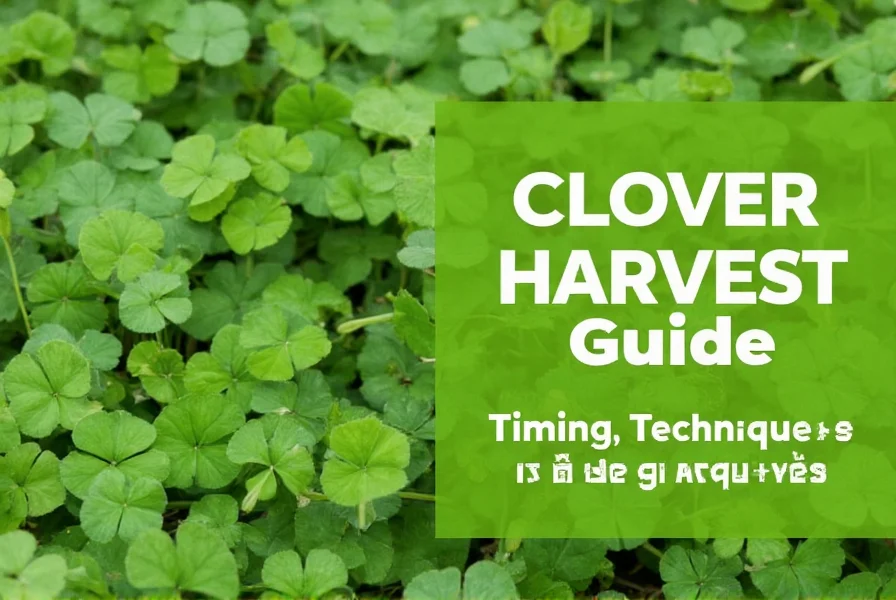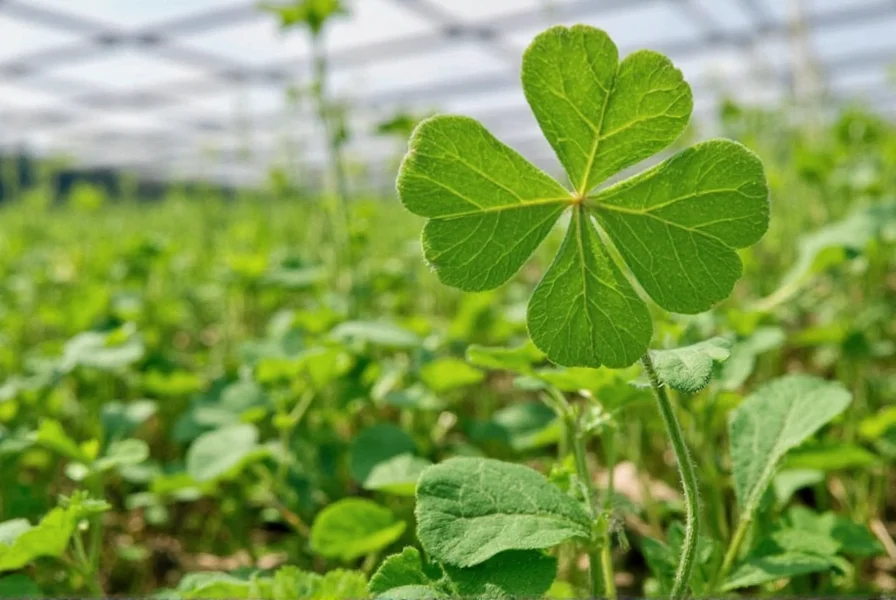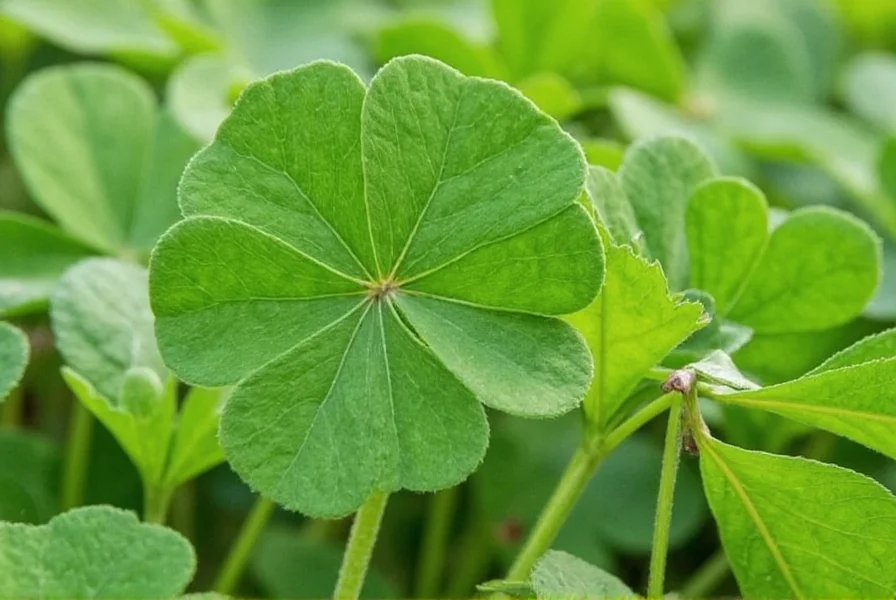The optimal time to harvest clover depends on your purpose: for hay or forage, cut red clover at early bloom stage (10-20% bloom) and white clover at late bud to early bloom; for seed production, wait until 80-90% of seed heads turn brown; for soil improvement as a cover crop, terminate at full bloom. Proper harvesting maximizes nutritional value, seed yield, or nitrogen fixation benefits while ensuring plant regrowth.
Harvesting clover correctly transforms this versatile legume from field to function, whether you're a small-scale gardener, livestock farmer, or sustainable agriculture practitioner. Understanding the nuances between clover varieties and harvest objectives separates successful cultivation from wasted effort. This comprehensive guide delivers actionable insights based on agronomic research and field-tested practices.
Understanding Clover Varieties and Their Harvest Requirements
Clover isn't a one-size-fits-all crop. Different species demand specific harvesting approaches to maximize their potential:
| Clover Type | Primary Use | Harvest Timing | Height at Harvest |
|---|---|---|---|
| Red Clover | Forage, hay, cover crop | Early bloom (10-20% flowers open) | 12-18 inches |
| White Clover | Grazing, living mulch | Late bud to early bloom | 6-8 inches |
| Crimson Clover | Cover crop, forage | Full bloom | 15-24 inches |
| Alsike Clover | Hay, pasture | Early bloom | 14-20 inches |
When planning your clover harvest for hay production, red clover typically offers two cuttings per season in most temperate climates. The first cutting comes in late spring to early summer, with the second approximately 30-40 days after the first harvest. White clover, often grown in pasture mixes, requires more frequent but lighter harvests to maintain stand density.

Optimal Timing for Harvesting Clover
Timing represents the most critical factor in successful clover harvesting techniques. Harvest too early, and you sacrifice yield; harvest too late, and quality plummets. The flowering stage provides the most reliable visual indicator across varieties:
- For forage quality: Harvest when 10-20% of plants are in bloom. This balances protein content (highest in vegetative stage) with yield (increasing through bloom).
- For seed production: Wait until 80-90% of seed heads have turned from green to brown. Morning harvest when dew has dried prevents seed shatter.
- As a cover crop: Terminate at full bloom to maximize biomass and nitrogen fixation while preventing excessive stem lignification.
Seasonal considerations significantly impact when to harvest clover for maximum benefits. In northern climates, aim for first cutting between late May and early June. Southern regions may start harvesting as early as April. The second cutting typically occurs 30-45 days after the first, depending on regrowth conditions.
Essential Tools and Equipment for Clover Harvest
The right equipment ensures clean cuts that promote regrowth and minimize plant stress. For small-scale operations:
- Sharp sickles or scythes for hand harvesting small plots
- Rotary mowers for larger garden areas
- Scissors or pruning shears for seed head collection
Commercial operations typically use:
- Disc mowers for clean, swift cutting with minimal plant disturbance
- Conditioners to crimp stems for faster drying when making hay
- Windrow turners to ensure even drying in field
Regardless of scale, maintaining sharp blades proves essential for proper clover harvest techniques. Dull equipment crushes stems rather than cutting cleanly, creating entry points for disease and slowing regrowth.
Step-by-Step Clover Harvesting Process
Follow this systematic approach for optimal results whether harvesting for hay, seed, or soil improvement:
- Monitor maturity daily as plants approach target stage, checking multiple locations in the field
- Check weather forecast to ensure 3-4 consecutive dry days for hay production
- Cut at recommended height - 2-3 inches for red clover, 1-2 inches for white clover
- Allow proper field drying - 1-3 days depending on conditions and equipment
- Turn windrows periodically to ensure even drying and prevent molding
- Bale or process when moisture content reaches 12-18% for hay
For harvesting clover for seed production, use a combine with appropriate settings: slow cylinder speed (400-600 RPM), wide concave openings, and reduced fan speed to prevent seed damage. Harvest in the morning after dew dries to minimize shattering.

Post-Harvest Processing and Storage
What happens after cutting determines final quality. For hay production:
- Monitor moisture content with a reliable tester before baling
- Store bales under cover or use breathable wraps if storing outdoors
- Check stored hay regularly for temperature spikes indicating spoilage
Seed producers should:
- Thresh immediately after harvest to prevent mold
- Dry seeds to 10-12% moisture before long-term storage
- Store in cool, dry conditions with moisture-proof containers
When harvesting clover as a green manure cover crop, incorporate immediately after cutting to maximize nitrogen release. Delaying incorporation beyond 24-48 hours reduces nitrogen availability for subsequent crops.
Avoiding Common Clover Harvest Mistakes
Even experienced growers make these preventable errors that compromise harvest results:
- Cutting too low - Removing crown buds prevents regrowth, especially in red clover
- Harvesting during wet conditions - Increases disease risk and delays drying
- Ignoring regional climate variations - Southern growers may need earlier harvests than northern counterparts
- Waiting for full bloom for hay - Fiber content increases dramatically, reducing digestibility
- Neglecting equipment maintenance - Dull blades damage plants and reduce stand longevity
Understanding these pitfalls represents half the battle in mastering clover harvest timing and techniques. Regular field monitoring and flexibility with harvest scheduling prove essential for adapting to changing conditions.
Benefits of Proper Clover Harvesting Practices
Correct harvesting transforms clover from simple vegetation into valuable agricultural resource:
- For livestock producers: Properly harvested clover hay contains 15-22% crude protein, significantly higher than grass hays
- For soil health: Terminating at full bloom maximizes nitrogen fixation (up to 150-200 lbs N/acre)
- For seed producers: Timely harvest increases seed viability and reduces shatter loss by 20-30%
- For honey producers: Understanding bloom cycles helps coordinate with beekeepers for optimal nectar collection
When implementing effective clover harvesting for soil improvement, the timing of termination affects not just nitrogen release but also weed suppression and soil structure benefits. Earlier termination provides more gradual nutrient release, while later termination offers greater biomass and weed suppression.











 浙公网安备
33010002000092号
浙公网安备
33010002000092号 浙B2-20120091-4
浙B2-20120091-4